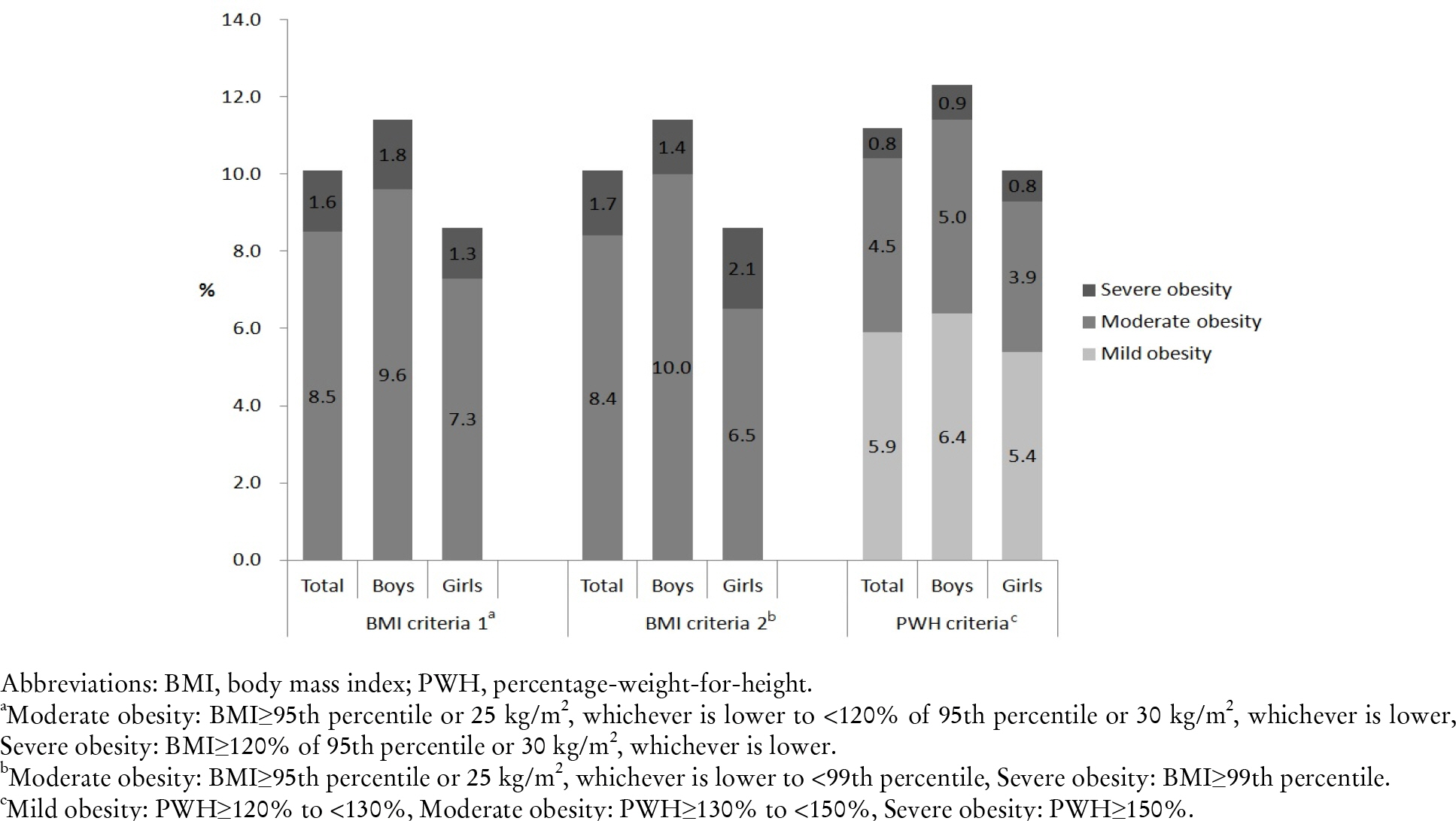Diagnosis of Severe Obesity in Korean Children and Adolescents
Article information
Abstract
Backgroud
Although the obesity prevalence in Korean children and adolescents has stabilized since early 2000s, it is noted that severe obesity is increasing. However, no diagnostic criteria to define severe obesity in Korean children and adolescents has not been recommended yet.
Methods
We established two kinds of diagnostic criteria of severe obesity with the 2007 Korean National Growth Charts; 1) body mass index (BMI) criteria 1: BMI≥120% of 95th percentile or 30 kg/m2, whichever is lower, 2) BMI criteria 2: ≥99th percentile. We examined the prevalence of severe obesity among children and adolescents who participated in the Fifth Korea National Health and Nutrition Examination Survey, 2010–2012 based on BMI criteria 1 and 2 as well as percentage-weight-for-height (PWH).
Results
We presented the age- and sex-specific BMI cut-offs of BMI criteria 1 and 2. The prevalence of severe obesity was 1.6% and 1.7% based on BMI criteria 1 and 2, respectively. The prevalence of severe obesity based on PWH was 0.8%, which was lower than the prevalences based on BMI criteria 1 and 2.
Conclusions
Our diagnostic criteria of severe obesity can be utilized in the epidemiological surveys and researches before the recommendation of the formal diagnostic criteria.

The proportion of mild, moderate and severe obesity in Korean children and adolescents according to three set of different diagnostic criteria.

Trends in age-standardized prevalence (standard error) of severe obesity in Korean children and adolescents aged 7–18 years

